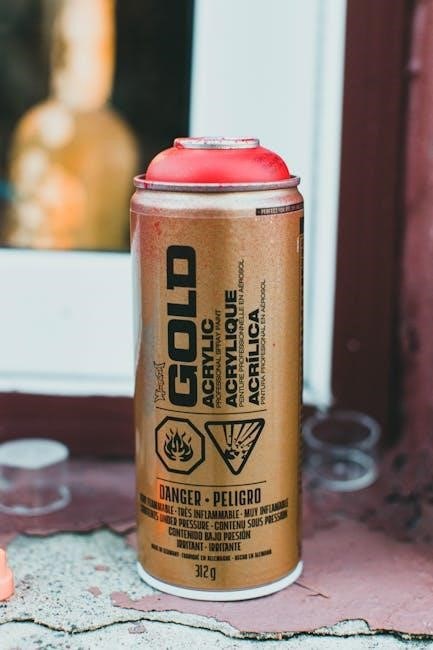
manual bottle filling equipment
Manual bottle filling equipment offers reliable, precise, and efficient solutions for small-scale liquid bottling needs, ideal for various industries requiring cost-effective and easy-to-operate machinery.
Overview of Manual Bottle Filling Machines
Manual bottle filling machines are reliable, easy-to-use devices designed for precise and efficient liquid bottling. They are ideal for small-scale production, offering cost-effective solutions for businesses and homemade products. These machines ensure minimal waste and are suitable for various industries, including food, beverage, cosmetics, and pharmaceuticals. Available in types like piston-based, gravity-operated, and peristaltic pump systems, they provide consistent filling volumes and are perfect for startups or small businesses requiring affordable, user-friendly bottling solutions.
Importance in Small-Scale Production
Manual bottle filling machines are essential for small-scale production due to their cost-effectiveness, portability, and minimal setup requirements. They provide precise control over filling volumes, reducing waste and ensuring consistent product quality. Ideal for startups and small businesses, these machines are versatile, handling various liquids like water, oils, and cosmetics. Their ease of use and affordability make them a practical choice for homemade products and low-volume operations, ensuring efficiency without high initial investments.

Types of Manual Bottle Filling Machines
Manual bottle filling machines include piston-based, gravity-operated, and peristaltic pump systems, each offering unique advantages for precision, simplicity, and handling various liquid types efficiently.
Piston-Based Manual Filling Machines
Piston-based manual filling machines use a piston mechanism to measure and dispense precise liquid volumes into bottles. They are ideal for viscous liquids like creams or oils, ensuring consistent filling levels. These machines are easy to clean and maintain, with fewer moving parts compared to other types. Regular lubrication of the piston is essential for smooth operation and longevity, making them a reliable choice for small to medium-scale production needs.
Gravity-Operated Manual Filling Machines

Gravity-operated manual filling machines rely on gravity to dispense liquids into bottles. These machines are simple, with no moving parts, making them highly durable and easy to maintain. They are often used for filling low-viscosity liquids like water or cleaning solutions. The machine is filled from the top, and liquid flows into bottles through an open valve. This design ensures minimal effort and is ideal for small-scale operations. Cleaning is straightforward, and they are cost-effective for businesses with basic filling needs.
Peristaltic Pump-Based Manual Filling Machines
Peristaltic pump-based manual filling machines use a flexible hose and rollers to dispense liquids, ideal for sensitive or viscous fluids. They gently squeeze the hose without direct contact, minimizing contamination. These machines are easy to clean and maintain, with fewer parts compared to other types. They offer precise control over filling volumes and are commonly used in laboratories, food, and cosmetic industries. Their compact design and low maintenance make them a popular choice for small to medium-scale operations.
Key Components of Manual Bottle Filling Equipment
Manual bottle filling equipment includes essential components like the filling nozzle, control panel, bottle rest, and pump system, ensuring precise and efficient bottle filling operations.
Filling Nozzle and Control Panel
The filling nozzle ensures precise pouring, reducing spills and waste, while the control panel regulates flow rate and pressure. Together, they enhance efficiency and user convenience, making manual bottle filling machines ideal for small-scale operations with varying bottle sizes and liquid types.
Bottle Rest and Pump System
The bottle rest provides a stable base for containers, ensuring proper alignment with the filling nozzle. The pump system transfers liquid from the tank to the nozzle, enabling consistent filling. Together, these components ensure efficient and accurate bottle filling, reducing spills and waste. Their design simplifies operation, making manual bottle filling machines user-friendly and effective for small-scale production needs across various industries.
Additional Features for Efficiency
Manual bottle filling machines often include features like foot pedals, adjustable nozzles, and drip trays to enhance efficiency. Foot pedals allow hands-free operation, reducing fatigue and speeding up the process. Adjustable nozzles accommodate various bottle sizes, ensuring precise filling. Drip trays catch excess liquid, minimizing waste and cleanup. These features improve convenience, consistency, and productivity, making manual filling machines more versatile and user-friendly for small-scale operations.
Operation of Manual Bottle Filling Machines
Manual bottle filling machines operate through simple, user-friendly processes, ensuring precise control over liquid volume and flow, making them efficient and reliable for small-scale bottling needs.
Step-by-Step Filling Process
Operating a manual bottle filling machine involves a straightforward process. First, prepare the machine by ensuring it is clean and placed on a stable surface. Adjust the filling nozzle to match the bottle size and desired liquid level. Prime the machine if necessary, then place the bottle under the nozzle. Activate the filling mechanism, such as a lever or pump, to start the flow of liquid. Once the bottle is filled, turn off the machine and remove the bottle. Regularly clean and maintain the machine for optimal performance.
Manual vs. Semi-Automatic Modes
Manual mode requires physical operation, such as pressing a lever or turning a handle, offering full control over the filling process. Semi-automatic mode uses basic automation, like preset fill levels or foot pedals, to streamline operations while still requiring some manual intervention. Manual mode is ideal for small batches and precise control, while semi-automatic mode enhances efficiency and reduces fatigue, making it suitable for slightly larger production needs.
Advantages of Manual Bottle Filling Equipment
Manual bottle filling equipment offers precision, minimal waste, and cost-effectiveness, making it ideal for small-scale production. Its portability and low maintenance requirements enhance efficiency and convenience.
Precision and Minimal Waste
Manual bottle filling equipment ensures high precision, delivering consistent fill levels with minimal waste. Designed for accuracy, these machines are ideal for small-scale production, reducing material loss and saving costs. Their simple mechanisms allow for controlled dispensing, making them suitable for viscous and sensitive liquids. This precision not only enhances product quality but also minimizes environmental impact, offering a practical solution for businesses prioritizing efficiency and sustainability in their bottling processes.
Cost-Effectiveness and Portability
Manual bottle filling equipment is highly cost-effective, offering a low initial investment and minimal setup requirements. Its lightweight and compact design ensures easy portability, making it ideal for small businesses, startups, and home-based operations. This affordability and mobility allow users to efficiently manage small-scale production without compromising on performance, providing a practical solution for businesses with limited budgets and spatial constraints.
Low Maintenance Requirements
Manual bottle filling equipment is designed for minimal maintenance, featuring durable construction with fewer moving parts. This reduces wear and tear, lowering downtime and operational costs. Cleaning is straightforward, and basic lubrication of components ensures smooth operation. The simplicity of these machines makes them ideal for small-scale operations where frequent interruptions are costly, ensuring consistent productivity and efficiency in various bottling environments without requiring extensive upkeep or specialized tools.

Limitations of Manual Bottle Filling Machines
Manual bottle filling machines have limitations, including production capacity constraints, potential for human error, and compatibility issues with varying bottle sizes, impacting efficiency and scalability.

Production Capacity Constraints
Manual bottle filling machines are best suited for small-scale operations, typically handling 600 to 1000 containers per hour, depending on the product’s viscosity. They are ideal for small businesses, startups, and homemade products, offering a practical solution for low to medium production volumes. However, they may struggle with larger-scale demands, making them less efficient for high-volume industries requiring faster bottling solutions;
Potential for Human Error
Manual bottle filling machines rely on manual operation, which can lead to human error, such as incorrect fill levels or improper bottle alignment. This may result in spilled liquid, underfilled or overfilled bottles, and potential contamination. While these machines are efficient for small-scale operations, their lack of automation means users must be vigilant to minimize mistakes, ensuring accuracy and maintaining product quality.
Compatibility with Bottle Sizes
Manual bottle filling machines often feature adjustable nozzles and flexible designs, allowing them to accommodate various bottle sizes. However, compatibility can be limited for extremely small or large bottles, potentially reducing efficiency in production lines requiring multiple bottle sizes. Ensuring proper alignment and fit is crucial for accurate filling, making adaptability a key consideration for users with diverse bottling needs.
Applications of Manual Bottle Filling Equipment
Manual bottle filling equipment is widely used in the food, beverage, cosmetic, and pharmaceutical industries, ideal for filling small batches of liquids like water, oils, and serums efficiently.
Food and Beverage Industry
Manual bottle filling equipment is extensively used in the food and beverage industry for packaging water, juices, sauces, and other liquids. These machines are ideal for small-scale producers, startups, and homemade products, ensuring minimal waste and easy operation. Their portability and cost-effectiveness make them suitable for businesses needing to fill small batches efficiently. This equipment is also popular in craft breweries and wineries for bottling samples or specialty products, offering precise control over fill levels and flow rates.

Cosmetic and Pharmaceutical Industries
Manual bottle filling equipment is widely used in the cosmetic and pharmaceutical industries for precise and efficient filling of small batches. These machines are ideal for products like lotions, creams, serums, and ointments, ensuring minimal waste and consistent fill levels. Their ease of use and cost-effectiveness make them suitable for startups and small-scale production. The ability to handle viscous liquids with accuracy also makes them a preferred choice for pharmaceutical applications, ensuring high-quality packaging solutions.
Craft Breweries and Wineries
Manual bottle filling equipment is a valuable tool for craft breweries and wineries, enabling precise and efficient bottling of small batches and specialty products. These machines are ideal for filling samples, limited editions, or unique formulations, ensuring minimal waste and consistent quality. Their portability and ease of use make them perfect for artisanal producers, allowing for quick adjustments and maintaining the high standards of craftsmanship that define these industries.
Maintenance and Care for Manual Filling Machines
Regular cleaning and lubrication of manual filling machines ensure smooth operation and longevity. Proper inspection and timely repairs prevent wear and tear, maintaining efficiency and reliability.
Cleaning and Lubrication
Regular cleaning and lubrication are essential for maintaining manual bottle filling machines. Clean the filling nozzle, tank, and pump system thoroughly after each use to prevent residue buildup. Lubricate moving parts like pistons or pumps to ensure smooth operation and prevent wear. Proper maintenance extends equipment lifespan, reduces downtime, and ensures precise filling. Always use food-grade cleaning agents for hygiene and safety, especially in food, beverage, or pharmaceutical applications.
Regular Inspection and Repair
Regular inspection and repair are crucial for maintaining manual bottle filling machines. Check for wear and tear on moving parts, such as pistons or seals, and replace worn components promptly. Ensure all connections and fluid lines are secure to prevent leaks. Lubricate mechanical parts as needed and verify that the control panel functions correctly. Follow manufacturer guidelines for repairs and keep a maintenance log to track servicing. This ensures optimal performance, prevents breakdowns, and extends equipment lifespan.

Cost-Effectiveness of Manual Filling Solutions
Manual filling solutions offer low initial investment and reduced operational costs, making them ideal for small businesses and startups with limited budgets and basic bottling needs.

Low Initial Investment
Manual bottle filling machines are highly cost-effective, requiring a low initial investment, making them accessible to small businesses, startups, and homemade product enthusiasts. Their affordable design ensures minimal setup costs while providing reliable performance for small-scale operations. These machines are ideal for businesses with limited budgets, offering a practical entry point into bottling without compromising on efficiency or precision, thus making them a popular choice for various industries seeking affordable solutions.
Reduced Operational Costs
Manual bottle filling machines significantly reduce operational costs due to their energy-efficient design and minimal maintenance requirements. With fewer moving parts, these machines experience less wear and tear, lowering repair expenses. Their simple operation reduces labor costs, making them ideal for small-scale operations. Additionally, the absence of complex automation minimizes energy consumption, further cutting overhead expenses. This makes manual filling machines a practical choice for businesses seeking to optimize their bottling processes while maintaining affordability and efficiency.

Safety Features and Precautions
Manual bottle filling machines include safety features like protective guards and emergency stops to prevent accidents. Proper training, supervision, and use of protective gear are essential for safe operation.
Protective Guards and Emergency Stops
Manual bottle filling machines are equipped with protective guards to prevent accidental contact with moving parts and emergency stops to halt operations instantly. These features ensure operator safety by minimizing injury risks during operation. Protective guards shield critical components, while emergency stops provide immediate shutdown capabilities, enhancing overall safety. Proper installation and regular inspection of these components are essential to maintain their effectiveness and ensure a secure working environment for users.
Proper Training and Supervision
Proper training and supervision are essential for the safe and efficient operation of manual bottle filling machines. Operators must be trained to understand machine components, safety features, and correct filling procedures. Supervision ensures adherence to safety protocols, reducing the risk of accidents and machine damage. Regular training updates and clear guidelines help maintain a safe working environment, minimizing errors and ensuring optimal machine performance.

Future Trends in Manual Bottle Filling Technology
Future trends include enhanced ergonomic designs and integration of basic automation, improving efficiency and user experience while maintaining affordability and simplicity for small-scale operations.
Enhanced Ergonomic Designs
Future manual bottle filling machines will feature improved ergonomic designs, focusing on user comfort and efficiency. These designs will reduce operator fatigue and enhance safety, ensuring smoother operations. Adjustable components and intuitive controls will cater to diverse user needs, making the equipment more accessible. By prioritizing ergonomics, these machines will boost productivity while maintaining their compact and portable nature, ideal for small-scale and artisanal production environments.
Integration of Basic Automation
Manual bottle filling machines are increasingly incorporating basic automation features, such as preset fill levels and foot pedals, to streamline operations. These enhancements reduce manual intervention while maintaining simplicity. Automation improves consistency and efficiency, especially for repetitive tasks, without compromising the machines’ portability or cost-effectiveness. This integration allows small businesses to scale production slightly while retaining the ease of use that manual machines are known for, making them versatile for evolving production needs.
Manual bottle filling equipment provides a practical, efficient, and cost-effective solution for small-scale production, offering precision and adaptability across various industries, making it a valuable tool for businesses.
Final Thoughts on Manual Bottle Filling Equipment
Manual bottle filling equipment is a versatile and cost-effective solution for small-scale production, offering precision, efficiency, and ease of use. Ideal for businesses and startups, these machines minimize waste and provide consistent results. Their adaptability to various industries, such as food, cosmetics, and pharmaceuticals, makes them a valuable tool. With low maintenance and portability, manual fillers are perfect for environments requiring flexibility and reliability, ensuring high-quality bottling processes with minimal investment.